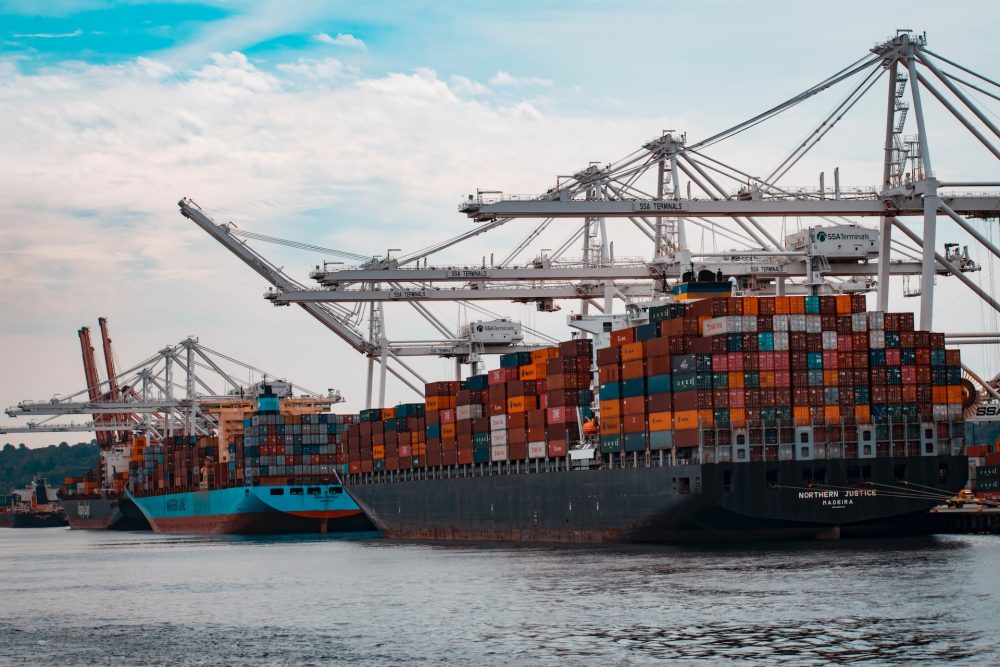
As we continue our course into 2023, the maritime industry continues to grapple with the lingering challenges of port congestion, which reached unprecedented levels in 2021. The congestion, which once plagued major ports from China to Europe and North America, shows no signs of abating. However, amidst this challenging environment, the adoption of digital technologies has emerged as the beacon of hope, promising to restore reliability to shipping schedules and breathe new life into global supply chains.
The Digital Age: Saviors of Port Congestion
In this era of digital innovation, maritime hubs across the globe have recognized the imperative of integrating technology into their operations to ensure efficiency, transparency, and, most importantly, to combat the persistent menace of port congestion. The utilization of these cutting-edge digital solutions has ushered in a wave of transformative benefits, bolstering the resilience of ports in the face of congestion crises.
A New Era of Organization
Digital solutions have brought about a seismic shift in the way ports organize their activities. Real-time ETA prediction systems now provide accurate information on ships’ estimated time of arrival (ETA), enabling ports to prepare their workforce and equipment efficiently. This optimization of working hours and shifts ensures that port services remain available around the clock, culminating in the efficient berthing and cargo discharge of arriving vessels.
The Power of Seamless Communication
The power of seamless communication has never been more evident. Digital solutions harness data from various sources, transforming it into advanced analytics and real-time dashboards. This fusion of data facilitates effortless communication among all stakeholders in the supply chain, ensuring that everyone is synchronized, ready to act swiftly, and preempt congestion bottlenecks.
Swift Handling through Automation
The automation revolution takes center stage with the deployment of automated cranes and vehicles. These robotic marvels expedite container movement, eliminating time-consuming processes like shuffling multiple containers to access a specific one designated for a particular truck. The result? A significant boost in handling capacity and the minimization of vessel queues at port docks.
Safety First, Always
Safety takes precedence as sensors blanket port areas, continuously monitoring potential hazards, from heavy machinery to toxic gases, and tracking environmental conditions like weather and wind. The amalgamation of Artificial Intelligence and the Internet of Things allows these sensors to predict and prevent accidents, ensuring minimal operational disruptions and downtime.
Predictive Maintenance: The Game Changer
Predictive maintenance has emerged as the game-changer. Gone are the days of waiting for machines to break down (corrective approach) or routinely replacing components irrespective of their condition (preventive approach). Instead, maintenance is based on identified risks or conditions (predictive approach), proving both cost-effective and highly efficient, reducing equipment unavailability.
Managing the Unforeseen
Ports are no strangers to unforeseen events, be it natural disasters or political turmoil. Here, Risk Management Modules shine, providing accurate predictions about hazardous areas. This empowers vessel captains with timely warnings, safeguarding both personnel and cargo.
On a broader canvas, port authorities wield Big Data-based solutions to craft effective port management strategies. Rigorous analysis identifies prevailing challenges, paving the way for targeted measures to address the pain points of the shipping industry.
Redistributing Cargo to Mitigate Congestion
In the United States and other nations blessed with multiple ports, redistributing cargo has emerged as a pragmatic solution to congestion. Major ports such as Los Angeles, Long Beach, New York, and New Jersey have grappled with extreme congestion due to overcapacity. The remedy? Redistribute traffic to less congested ports, even if it means tolerating longer lead times.
To facilitate this logistical shift, tools like Sinay’s ETA Module, powered by Artificial Intelligence, assist shipping companies in evaluating traffic conditions in various ports. However, this approach presents challenges, notably the limited capacity of remote ports to handle larger vessels and the need for a sufficient number of truckers to transport containers from these ports.
Diversification of Transportation Modes
Port congestion doesn’t stop at the port’s edge; it spills onto the surrounding roads. The influx of trucks exacerbates congestion, underscoring the importance of exploring alternative modes of transportation such as rail and inland waterways. Coupled with container tracking solutions and seamless communication systems, supply chains function seamlessly, efficiently coordinating between ports and other logistics operators.
Easing Port Restrictions
In 2021, COVID-19-related restrictions and quarantines paralyzed port traffic in some regions. With vaccinations and protective measures now in place, minimizing supply chain disruptions is paramount for preserving operational efficiency. Ports must also reconsider how they manage empty cargo containers to prevent congestion on quays. Storing these containers in inland depots until they are needed for export can expand the pool of available trucks and chassis, expediting cargo release, all tracked in real-time through digital tools.
The Global Economic Impact
Port congestion’s repercussions transcend the maritime industry, affecting sectors as diverse as automotive and consumer goods. Delays in the delivery of raw materials and finished products have led to shortages, hampering global production and businesses.
Additionally, port congestion has escalated costs dramatically, hitting exporters, importers, forwarders, and truckers particularly hard. Freight carrier rates have soared, influencing final prices, while truckers endure extended wait times, limiting their daily productivity. Importers resort to airfreighting goods to meet market demand, incurring additional expenses and facing supply shortfalls. Customers face demurrage penalties as containers linger at terminals, despite their readiness for pickup.
In Summary
Though the specter of global port congestion may still loom large, the integration of advanced technology and collaborative efforts throughout the supply chain offer a glimmer of hope for resolution. Customers, too, must reevaluate their sourcing and supply chain strategies, reducing dependency on ports and ocean freight carriers. As the maritime industry sails through these turbulent waters in 2023, innovation and adaptability remain the compass guiding its way forward.

